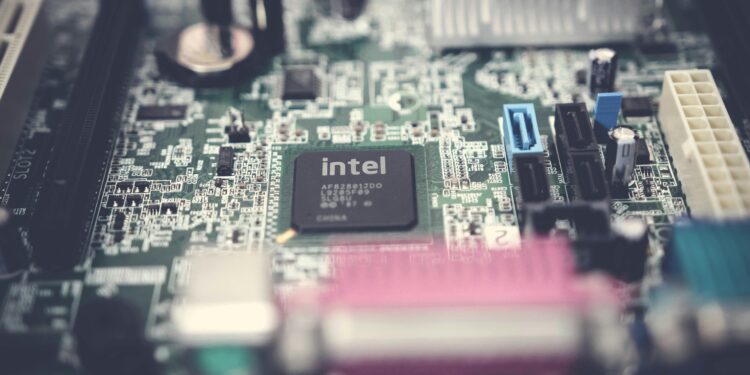Intel’s Massive Investment Targets Foundry Growth as Company Eyes Turnaround
Intel (INTC) has announced a major $28 billion investment to build two new chip factories in Ohio, marking the latest step in its efforts to expand its foundry business and regain competitiveness with Taiwan Semiconductor Manufacturing Co. (TSMC). The move is part of CEO Pat Gelsinger’s turnaround strategy to restore Intel’s dominance in the chip industry, particularly after losing its technological edge to TSMC, the global leader in contract chip manufacturing.
News of the investment, announced Friday, prompted a nearly 2% rise in Intel’s stock, which has suffered a decline of over 55% this year. Despite these gains, Intel remains under pressure as it struggles with market challenges, including workforce cuts, suspended dividends, and recent high-profile departures from its board. Gelsinger’s ambitious plan aims to reposition Intel as a leader in the semiconductor industry by focusing on custom chip manufacturing for external clients, known as the foundry business.
Intel’s recent strides have included a multibillion-dollar contract with Amazon to produce custom AI chips for its cloud services division, a deal that many see as a strong vote of confidence in Intel’s foundry capabilities. This contract aligns with Intel’s vision to cater to high-demand clients in the tech sector, supporting Gelsinger’s drive to transform Intel into a major player in contract chipmaking.
The new Ohio project, in its initial phase, is expected to create approximately 3,000 jobs at Intel alone. Intel’s expansion plans come as the U.S. pushes to bolster domestic semiconductor production, reducing reliance on overseas suppliers and supporting job creation in the tech sector. This Ohio investment is also expected to spur economic growth in the region, as construction and related business activities ramp up to support the project.
Intel’s foundry business has been in the spotlight since Gelsinger took the helm, representing a significant shift in strategy. The business model, which relies on producing chips for other companies rather than focusing solely on Intel’s own products, brings the company into closer competition with TSMC and Samsung. As Gelsinger seeks to navigate Intel’s challenging landscape, he has made several decisive moves, such as reshaping the workforce and reallocating resources to support long-term growth.
Intel’s turbulent year has seen the company grapple with several setbacks, including the sudden resignation of a prominent board member and a dip in its stock price, threatening its standing within the Dow Jones index. However, the company remains committed to its long-term vision, and the Ohio investment reflects a growing determination to regain its competitive edge and emerge as a formidable contract chipmaker.
This ambitious project is part of Intel’s broader strategy to revitalize its brand, capitalize on the growing demand for custom chips, and establish a robust U.S. manufacturing presence amid global semiconductor supply chain shifts. While Gelsinger’s strategy faces considerable challenges, the Ohio factories mark a pivotal step toward repositioning Intel within the rapidly evolving chip industry.
You might like this article:Upexi Investigates Unusual Trading Activity After Reverse Stock Split











